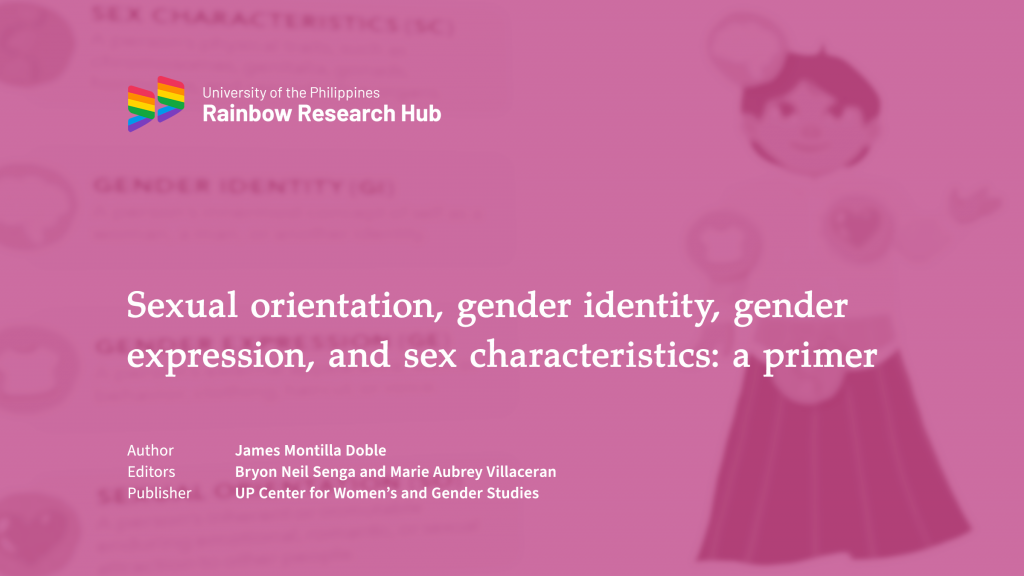
Essence
This primer on sexual orientation, gender identity, gender expression, and sex characteristics (SOGIESC) serves as an introduction to the SOGIESC framework. It also includes a guide to gender-affirmative terminology detailing biased or anti-LGBTQI words to avoid and to use instead of them, as well as a glossary of terms related to being LGBTQI and SOGIESC.
Authors and Editors: James Montilla Doble, Bryon Neil Senga (Ed.), Marie Aubrey Villaceran (Ed.)
Primer: UP Center for Women’s and Gender Studies
Citation (APA): Montilla Doble, J. (2022). Sexual orientation, gender identity, gender expression, and sex characteristics: A primer. UP Center for Women’s and Gender Studies. https://cws.up.edu.ph/?p=2441
Explore
Express
- In your own words, define sexual orientation, gender identity, gender expression, and sex characteristics.
- What does queer mean?
- What does questioning mean?
- What does the plus (+) sign mean in the initialism “LGBTQIA+”?
- What is heterosexism (or homophobia)?
- What is cisgenderism or cissexism (or transphobia)?
- What is monosexism (or biphobia)?
Engage
[Individual/group activity]
Answer the following questions:
- Other than queer, why are people who are questioning also included under Q in the LGBTQI initialism?
- Why is the phrase “people/persons of diverse SOGIESC” sometimes used instead of the initialism “LGBTQI”? When is using “people/persons of diverse SOGIESC” more appropriate? When is using “LGBTQI” more appropriate? Who are included and excluded when we use one term over another?
- What are the limitations of the SOGIESC framework in the Philippine context more generally? What are its advantages and disadvantages when conducting LGBTQI research in the Philippines specifically?
- Why is knowing the SOGIESC framework important for LGBTQI people? Is it important for non-LGBTQI people as well?
[Group activity]
Create any learning material (article, infographic, short video essay, etc.) on the SOGIESC framework or other important points raised in the book. The goal of the learning material is to make LGBTQI and SOGIESC concepts more accessible.
- SOGIESC 101: Introduction to sexual orientation, gender identity, gender expression, and sex characteristics (in Filipino, Taglish, or other Philippine languages)
- Using the SOGIESC framework in conducting LGBTQI research in the Philippines (advantages, disadvantages/limitations)
- SOGIESC 102: Other terms related to sex, gender, and sexuality (in Filipino, Taglish, or other Philippine languages)
